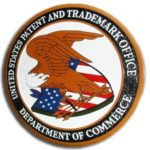Piling On: Even More USPTO Subject Matter Guidance
Piling On: Even More USPTO Subject Matter Guidance
The USPTO recognizes there’s a problem in subject matter eligibility. If you don’t believe it, look at how much guidance it has issued since the Supreme Court’s Alice decision. Here’s some. Here’s some more. And how about this? And that’s not a complete list–those are just the ones I’ve written about in this blog.
Well, Director Iancu is back with another installment in his laudable attempt to bring clarity to the questions about what is patentable subject matter with more guidance. The October 22-page guidance covers 4 topics:
(I) evaluating whether a claim recites a judicial exception;
(II) the groupings of abstract ideas enumerated in the 2019 PEG (itself a 40-page appendix to the guidance);
(III) evaluating whether a judicial exception is integrated into a practical application;
(IV) the prima facie case and the role of evidence with respect to eligibility rejections; and
(V) the application of the 2019 PEG in the patent examining corps.
Happy reading!
The guidance notes the limit of “abstract ideas” to three groupings: Mathematical Concepts; Methods of Organizing Human Activity; and Mental Processes. Claims that do not recite subject matter within these groups “should not be treated as reciting abstract ideas” except in “rare circumstance.” Dennis Crouch at Patently-O summarized these groups succinctly:

Mathematical concepts include: mathematical-relationships; mathematical formulas or equations; and mathematical calculations
Methods of Organizing Human Behavior include: Fundamental economic practices or principles; commercial or legal interactions; managing personal behavior or relationships or interactions between people (including playing games);
Mental Processes can include claims that require a computer, but do not include steps that cannot practically be performed in the human mind; pen and paper counts as a mental process.
And even if a claim recites what could be an abstract idea, the guidance states that an examiner should not conclude that the claims are directed to an abstract idea under Alice Step 1 if the judicial exception is integrated “into a practical application of that exception.” Thus, practical applications of abstract ideas are something drafters should include in their applications.
As has been the case in the recent guidance under Director Iancu’s watch, this guidance gives more avenues to secure claim allowance. Whether patents issued based on this guidance hold up under court scrutiny remains to be seen.
If you have questions, contact me.
